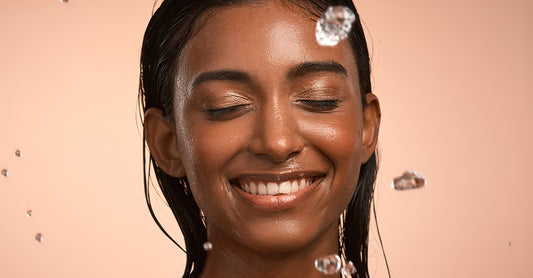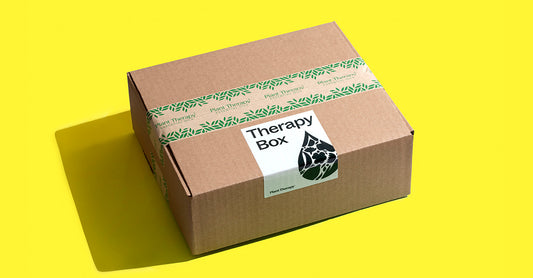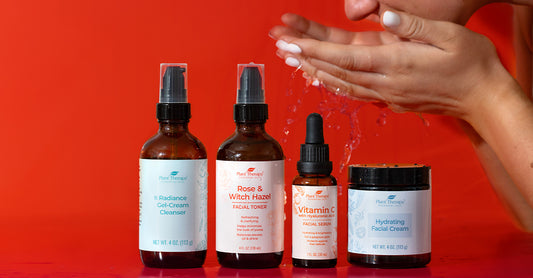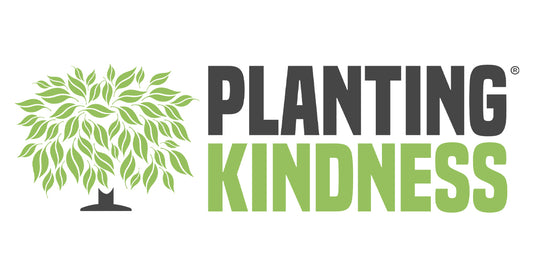What They Are, How We Use Them, and What That Means For You
Let’s not tiptoe around the truth: there are a lot of facets about aromatherapy that can cause some contention – even among the most respected professionals of the industry. It could be ingestion of oils, topical dilution rates, standardization of oils, use around pets, contraindications…really the list goes on and on (if you want to learn more about where Plant Therapy stands on some of these controversial topics, follow the link listed near the end of this blog). But today we want to focus on a topic that may not be so familiar, and that is the use of isolates. Because if you trust us enough to bring our products into your home, then it’s up to us to make sure you know the what, how, and why of each ingredient we use.

What Are Isolates?
So what the heck are isolates anyways? In the simplest terms, isolates are naturally occurring single chemicals that have been isolated from their natural sources. Isolates are the single constituents that make up all essential oils. You probably even know a few of them! Linalool is one of the most well-known isolates, thanks partly due to Lavender Essential Oil’s popularity. Geraniol (found in Geranium oils), citronellal (found in – you guessed it – Citronella), and limonene (a major component of citrus oils) are just a few of the isolates with name recognition. But there are hundreds of isolates that may not sound so familiar — or friendly. 2,3-pentanedione, delta-dodecalactone, and p-anisyl acetate are isolates too, each with their unique characteristics and each isolated from their botanical source.

How are Isolates Extracted?
Plants are like little chemical factories. If you’ve ever checked out a GC/MS report, you know what we’re talking about. Plants often have dozens of different constituents that make up their essential oil, and each constituent is a chemical molecule with varying sizes and weights. So how are those compounds isolated from their source?
Isolates are often taken from essential oils using fractional distillation. This method involves the separation of a liquid into fractions using differing boiling points. As the oil heats up, the vapor rises into a long column above the still. The vapor is repeatedly condensed and re-evaporated as it moves toward the top, which distills the vapor many times. Because of this, the column can be tapped at various levels to draw off different fractions. This isolates different parts of the oil with different scent notes!
This process of isolation is also useful for some carrier oils. For example, Fractionated Coconut Oil is an isolate, which is why it stays liquid at room temperature.

Why does Plant Therapy Use Isolates?
At Plant Therapy, we love creating beautiful, unique blends you can’t find anywhere else. We also love to try new things and introduce our customers to new scent profiles and all of the amazing naturally occurring compounds in botanicals. When we use isolates, rest assured that we never hide them. If it isn’t listed directly on the label (and instead referred to as “natural fragrance”), you can always find a full ingredient breakdown PDF on a specific product’s website page. Isolates, often paired with essential oils, make incredible fragrances that not only smell amazing but also often have a longer-lasting scent that can push through waxes and butters better than essential oils alone. This is because a natural fragrance can be made to include heavier compounds and fewer lighter, volatile compounds. You’ll notice isolates present in our candles, bath bombs, and even some seasonal blends (like our popular Apple Orchard Blend).
Only the Highest Quality – Every Time
Before we add an isolate to any product it goes through the same rigorous quality standards as all of our essential oils. We purchase from reputable and carefully vetted suppliers and have each isolate third-party tested for purity. We follow this up with internal testing to ensure each isolate meets our standards. Like every ingredient we use for any product, we do not compromise on quality. We hope that through our transparency and integrity you’ll continue to choose us for your natural product needs – whether or not that includes isolates. And if you’re not a fan of isolates, that’s no problem! We have hundreds of essential oils and essential oil blends to choose from that do not include additional isolated compounds.
It is our hope that we can continue to delight you with fun, unique scents that you’ll absolutely love — be that with or without isolates. We have a few more blogs highlighting our use of isolates and how they compare with other natural ingredients, so take a look if you’re interested!
Isolates: What You Need to Know
Isolates vs. Essences vs. Essential Oils: Everything You Need to Know
Oleoresins, CO2 Extracts, Essences and Isolates: Differences & Benefits









